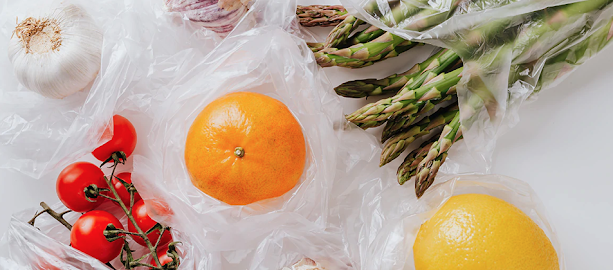How To Recycle Soft Plastics
Like everyone else you've probably got a cupboard or a drawer full of plastic bags, because in Australia soft plastics can’t be recycled through most kerbside recycling services. Seriously right ?
So, what do we do with them? They can't be thrown in the bin because they'll end up in landfill and take years to break down. Stopping soft plastics from entering landfill is one of the simplest ways to do your bit for the environment.
How many soft plastic bags do you really need ? Here's a simple guide on how to recycle those soft plastics you don't need.
What are soft plastics?
It’s really important to be able to identify soft plastics. These items are generally the plastic bags and packaging that we get from stores. From bread bags to bubble wrap, there are many forms of soft plastic so here is a list of some common ones you'll find in your home or workspace:
- Cereal box liners
- Snap lock bags / zip lock bags
- Cling film
- Dry pet food bags
- Fresh produce and frozen food bags
- Newspaper and magazine wrap
- Rice bags
But, the list goes on, and when these items are not recycled with care they can contribute to the plastic waste problem across the world.
The problem with Soft Plastics
In Australia, most local councils can’t accept soft plastic to recycle in your normal kerbside collection because it clogs the sorting machines. So if you add your plastics into your recycling bin at home, the plastics that aren’t recycled are sent to landfill.
Adding to landfill create massive problems for the environment. Also, lightweight plastic bags, food wrappers and chip packets can easily fly away during transport and end up in the ocean, creating life-threatening hazards for the creatures that live in the sea.
Where can you recycle soft plastics in Australia?
Soft plastic as listed above can be recycled through REDcycle, a recovery program for post-consumer soft plastic. This initiative not only keeps the plastics and packaging out of landfill but our beloved beaches, rivers and parks too!
REDcycle have a guide on what can they can accept, and you can also check your packaging for the new Australian Recycling Label (ARL) or the REDcycle logo (both gradually rolling out across product packaging).
Then, all you have to do is gather all of your soft plastics and drop them into a collection bin at participating supermarkets. There are participating supermarkets across Australia, and REDcycle bins are typically located near the checkout area.
Your plastics don't have to be rinsed before dropping them off, just make they are empty and dry!
What happens to them afterwards?
Then, all the collected plastics get made into something new, fantastic and useful! In collaboration with three Australian owned recycling and manufacturing partners, the soft plastics are recycled into a range of new products.
REDcycle partners use the materials in many ways. Close the Loop uses recycled soft plastics to help make road infrastructure. And, Plastic Forests remake the materials into different gardening items, such as edging, stakes, and fence posts. Replas uses recovered material to produce outdoor furniture and signage, which is often used by schools and parks.
Final step: Buy recycled products
We also need to keep in mind the basic principle of recycling that REDcycle champions: “Nothing is truly recycled until it re-enters the market as a recycled-content product and someone buys it.”
So even after you've recycled your assortment of plastic bags and chip packets, you can give the Earth a helping hand by buying recycled items. This is a really important final step to "close the loop".
When we buy items made out of recycled materials it further supports a market for the material we discard, and it encourages businesses and people to truly recycle. When we don’t buy recycled items, all those plastics will end up in landfills.



Comments
Post a Comment